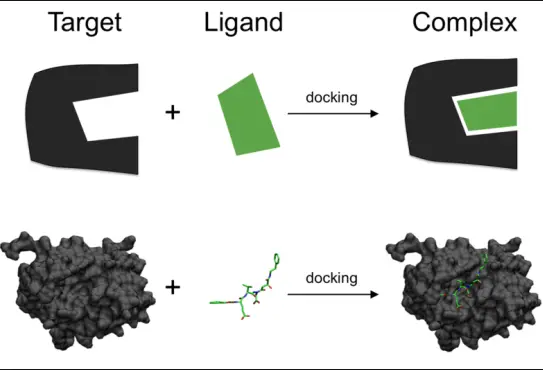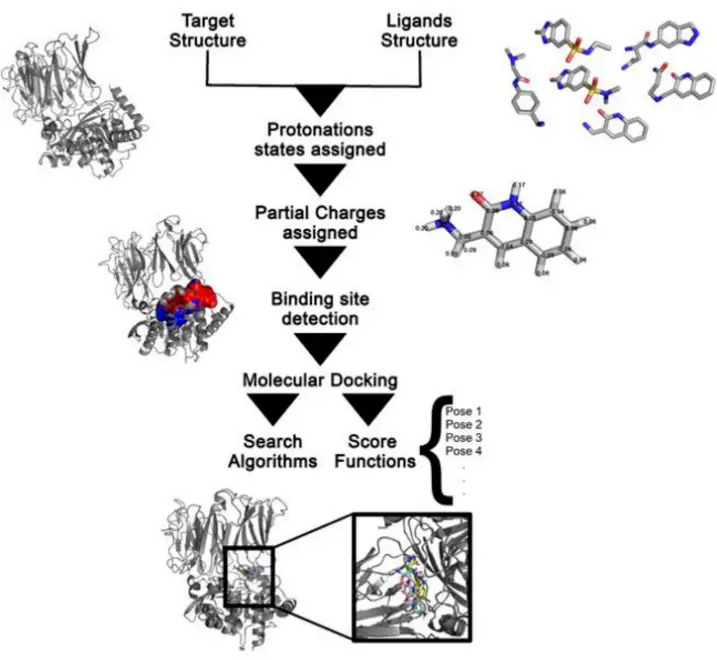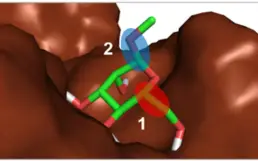Introducing the world of molecular biology and biochemistry, this blog will explore the difference between two important tools: molecular docking and scoring. By looking at the purpose of each tool and the differences between them, you will gain a better understanding of how they are used in the field of drug discovery.
Finally, we will discuss the advantages and disadvantages of both tools and how they can be used to guide drug discovery.
Overview of the different types of molecular docking and scoring

Molecular docking and scoring are two distinct processes used to evaluate the binding affinity between a ligand and its target. Docking is the process of predicting the possible binding sites of a ligand on its target, while scoring is the process of calculating the relative binding affinities of the different binding sites. Although both processes are used to assess the binding affinity between two molecules, they are based on different principles.
Although both processes are used to assess the binding affinity between two molecules, they are based on different principles. Docking relies on the principles of molecular mechanics and considers the shape, size, charge, and other physical characteristics of the ligand and target. In contrast, scoring is based on the principles of thermodynamics and considers the energetics of the interaction, such as the binding free energy of the ligand and the target.
Together, these two processes provide a comprehensive assessment of the binding affinity between two molecules.
Advantages and disadvantages of molecular docking and scoring

Molecular docking and scoring are two powerful tools used to identify possible binding interactions between two molecules. While both methods are used to predict the binding affinity between two molecules, there are distinct differences between them. Molecular docking is used to predict the binding geometry of two molecules, while molecular scoring is used to evaluate the binding affinity of those molecules.
Molecular docking is typically used to identify small molecules that can potentially bind to a target protein and to generate hypotheses for drug development. Molecular scoring, on the other hand, is used to assess the quality of the binding interaction and to rank the results generated from docking.
Molecular docking is a very powerful tool, but it is not without its disadvantages. It is computationally expensive and will typically require hours of processing, which can be costly and time consuming.
Additionally, docking is limited in its ability to accurately predict binding interactions, as it is only as accurate as the input parameters used. Molecular scoring, while more accurate, can also be limited in its ability to accurately predict binding affinities due to a lack of knowledge of the exact binding environment. Overall, both molecular docking and scoring provide valuable insight into potential drug-target interactions, but it is important to understand the differences between the two methods in order to make the most out of them.
The relationship between molecular docking and scoring
Molecular docking and scoring are two closely related processes in drug discovery. Molecular docking is the process of predicting how a given drug molecule will fit and interact with a specific target molecule. This involves predicting the orientation and conformation of the molecules in order to determine the most energetically favorable arrangement.

This involves predicting the orientation and conformation of the molecules in order to determine the most energetically favorable arrangement. Scoring, on the other hand, is the process of assigning a numerical value to the predicted dockings in order to assess the likelihood of a binding event. The goal of scoring is to rank the predicted dockings in order of their predicted binding affinity.
While these two processes are closely related, there are important differences between them. Molecular docking focuses on predicting the orientation and conformation of the molecules, while scoring focuses on assigning a numerical value to the predicted dockings. By combining the two processes, scientists can gain a better understanding of the binding affinity between two molecules and develop more effective drugs.
By combining the two processes, scientists can gain a better understanding of the binding affinity between two molecules and develop more effective drugs.
How molecular docking and scoring are used in drug discovery

Molecular docking and scoring are two important components in the process of drug discovery. Molecular docking is a technique used to predict the binding of two molecules, such as a drug and its target, by virtually placing the drug in a binding pocket of the target and assessing the interaction between the two molecules. On the other hand, scoring is used to measure the quality of the interaction between the two molecules and calculate the likelihood of the drug binding to its target.
The differences between the two techniques are that docking predicts the binding of molecules and scoring measures the strength of the interaction between them. Therefore, a combination of the two techniques can provide valuable information on the efficacy of a drug candidate in the process of drug discovery.
Challenges of molecular docking and scoring
Molecular docking and scoring are both important techniques used in understanding and predicting the binding of a small molecule to a larger molecular target. However, there are some distinct differences between the two. Molecular docking is the process of predicting how a small molecule will bind to a larger molecular target.
It requires the user to define the binding site of the target protein, as well as the conformation of the small molecule. On the other hand, molecular scoring is the process of evaluating the predicted binding of a small molecule to a larger molecular target.
The scoring function evaluates the predicted binding affinity of a small molecule to its target and determines whether or not the proposed binding is favorable. In other words, molecular docking is the process of predicting the binding, while molecular scoring is the process of assessing the accuracy of the predicted binding.
Therefore, an understanding of both processes is necessary for successful docking and scoring.
Final Touch
In conclusion, molecular docking and scoring are two different techniques used in molecular modeling. Molecular docking is used to predict the binding affinity of a ligand to a target molecule, while scoring is used to evaluate the quality of the docked pose.
Both techniques are important for understanding the binding mechanism between proteins and small molecules. Molecular docking requires more computational power, while scoring can be done quickly and accurately. Both techniques are essential components of molecular modeling, and their use can provide valuable insights into the interactions between proteins and small molecules.

